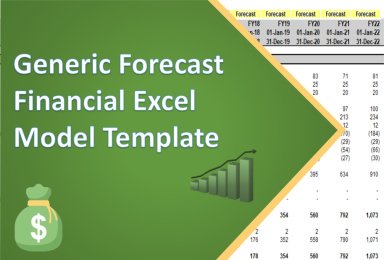
Last version published: 22/12/2018 16:45
Publication number: ELQ-72284-9
View all versions & Certificate

Generic forecast financial Excel Model Template
Generic forecasting model including valuation calculations
Further information
To generate a forecast set of financial statements for a business and produce a valuation. The model also has the ability to enter historic balances if there are any
The user has some basic understanding of discounted cash flow valuations
The user has enough understanding of the business to enter sales, costs, working capital, capex and transaction assumptions
The user has a decent understanding of accounting
The user requires flexibility in the tax calculations to correctly reflect their own tax jurisdiction
When the model requires debt to be drawn down at some point in the future/forecast period (note that if debt already exists in the business then that is fine)
When there are more than three sales divisions (however there is no obligation to use all three!)
If the user requires more than one type of depreciation rate for assets
When the user wishes to model intangibles or the Investments balance in a flexible way (ie not held constant)
If the user requires more than one type of working capital assumptions for each of debtors, creditors and stock












